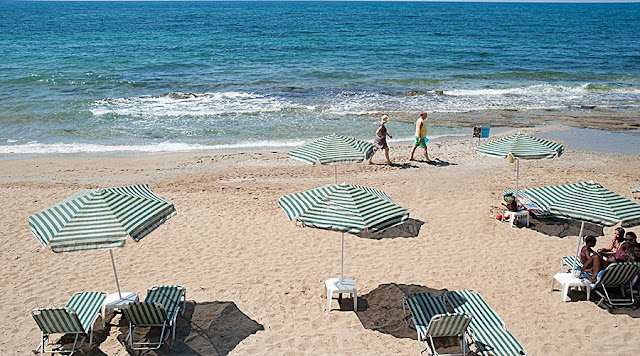Rouva Forest and Gorge- Crete
40.94 km from Rethymno is the Forest and Rouva Gorge.The gorge of Agios Nikolaos, Gafaris or Rouvas is bounded by the peaks of Ambelakia from east and Samari from west.
This is the most important gorge of Psiloritis and central Crete and took the name Agios Nikolaos from the monastery of St Nicholas at its exit near Zaros. This is an ecosystem with rich flora and fauna, smaller canyons and interesting geological formations and cliffs of rare beauty. It has a total length of 4 km with 2,7km being well-shaped by the Forest Service for soft activities such as hiking, mountaineering, rock climbing, naturalism and observation of wildlife in a truly unique environment.
Unfortunately, a significant part of the beautiful forest of Rouvas, near the south entrance of the Gorge was destroyed by a major fire in 1994.
THE WOOD OF ROUVAS
The forest of Rouvas, in the gorge of Saint Nicholas, is an important ecosystem of holly trees of national interest. It occupies the inner valley of Psiloritis bounded by the peaks Ambelakia and Samari, Chalazokefala (south), Skinakas (west), Koudouni (north) and Giristi (east).
The trees of the area are very old, the diameter of their trunk in some cases exceeds 1 meter and their height can reach 15 meters. They grow in very dense formations, thus they constitute a unique forest biosociety, with many species of shrubs to complement the vegetation.
Along with holly trees, there are some other species which are typical of the Cretan flora such as aria, zelkova, cypress, pine, plane, pear trees, etc. The forest area covers about 30,000 acres. The rarity of the forest of Rouvas is related to the fact that holly trees escaped from the bushy typical shape and size and acquired characteristics and sizes different from those used in Greece.
This is possibly explained by the disappearance of adverse external factors (people - goats - etc.) that enabled shrubby oaks to evolve in the form that we see them today. On the slopes around the forest someone can see scattered “mitata” (shepherd houses), most of them being deserted today.










Σχόλια
Δημοσίευση σχολίου